INTRODUCTION
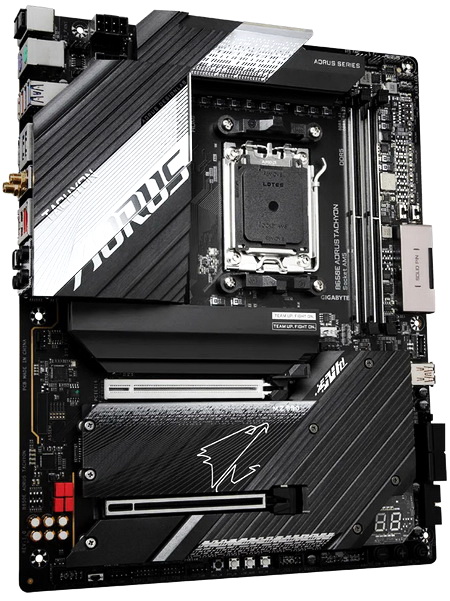
The latest Ryzen 7000 series of CPUs by AMD may not have taken the market by storm as intended (just a tad weird considering performance levels have been very good across all models - too soon to tell about the 3D models) but the "red" camp still owns a considerable chunk of the global market. Now as I’ve said in past reviews one of the things that never liked about AMD was the lack of high-end motherboards something which started to change with the appearance of the first X570 motherboards back in late 2019. Intel partners still had better offers in the market sure but that's when the gap finally started to shrink and the appearance of the first X670E models last year made it clear that AMD could finally compete in that area as well. Still since motherboards based on the X670E chipsets are aimed towards enthusiasts and professionals alike they are not exactly affordable which is why AMD also launched their B650E chipsets which were clearly meant for casual users and gamers. The AORUS TACHYON motherboard by GIGABYTE sits at the top of their B650E line and after spending almost 3 weeks with it i can finally share my review with all of you.
GIGABYTE offers a comprehensive product lineup that aims to “Upgrade Your Life.” With expertise encompassing consumer, business, gaming, and cloud systems, GIGABYTE established its reputation as a leader in the industry with award-winning products including motherboards, graphics cards, laptops, mini PCs, monitors, and other PC components and accessories. As a perennial developer in PC and server hardware and solutions, GIGABYTE is dedicated to foster marvelous user experiences for content creators and gamers, allowing their imagination to manifest a better life; as a server hardware and solution provider, GIGABYTE is poised to extend our scope in business servers and cloud systems with hardware and software solutions that integrate AI and AloT applications to allow customers to capture, analyze, and transform digital information into economic data, accelerating businesses' success from edge to cloud.
Many consumers have been waiting for the B650E AORUS TACHYON to make its appearance in the market and up until the moment i got my hands on it almost a month back i hadn't done my research. So, this model sports an 16+4 phase digital VRM (16xVcore, 2xSOC, 2xMISC - 100% tantalum polymer capacitors), two EMI shielded reinforced PCIe slots (1xGen5 x16 and 1xGen4 x4), two reinforced DIMM slots for RAM kits up to 6666MHz+ (with support for both EXPO and XMP 3.0 profiles), three M.2 PCIe SSD connectors (2xGen5 and 1xGen4) and a 10 layer PCB for superior reliability. The list of features obviously doesn't end here so the B650E AORUS TACHYON also features 2.5GbE Ethernet connectivity (Intel i225), Bluetooth v5.2 and Wi-Fi 6E RZ616 wireless connectivity (MediaTek MT7922A22M), Realtek ALC1220-VB High Definition Audio onboard audio card with high-quality capacitors, four SATA 6Gb/s ports (support RAID 0/1/10) and a debug LED complete with power on/off, reset, LIMP mode, cold reset and clear CMOS buttons and reserved switch, BIOS switch, CPU ratio and OC trigger switches. Moving to the rear I/O of the B650E AORUS TACHYON here GIGABYTE has placed QFlash Plus and OC ignition buttons, PS/2 keyboard and mouse ports, two SMA antenna ports, HDMI v2.1 port (up to 4096x2160p 60Hz), Intel 2.5G LAN port, 3 USB 3.2 Gen 2 ports, 4 USB 3.2 Gen 1 ports, 1 USB 3.2 Gen2x2 type-C port and the optical out and analog audio ports. So, let's see if all this hype about the B650E AORUS TACHYON by GIGABYTE is well justified or not.
SPECIFICATIONS AND FEATURES

PACKAGING AND CONTENTS
The AORUS logo, model name a socket type are all printed at the front of the box.
A sticker with the serial number, barcode and product name is placed on the left side.
On the right side GIGABYTE has placed a quick product description in 18 languages.
Several product pictures located at the rear of the box are used to showcase the main motherboard features.
Typically, the motherboard is wrapped inside a static-free bag and placed in a formed piece of cardboard (the rest of the bundle is placed underneath).
GIGABYTE has always set a good example in terms of bundle with their top AORUS boards and the B650E TACHYON is no exception. So along with the motherboard inside the box you'll find an extra backplate, I/O shield, 2 SATA cables, 2 digital LED adapters, RGB extension cable, thermistor lead, WiFi antenna, G-Connector, metal case badge, several stickers and the installation guide.
THE B650E AORUS TACHYON
Once again GIGABYTE has chosen a black and light grey color theme for their latest motherboard.
The 16+4 phase digital VRM is cooled by a large L-shaped aluminum heatsink (the tantalum capacitors are also visible).
Two 8pin CPU power connectors are required much like most high-end motherboard models.
Since the B650E AORUS TACHYON target audience are overclockers and enthusiasts GIGABYTE chose to go with 2 reinforced DIMM slots with supported speeds exceeding 6666MHz (better performance and higher stability).
Next to the DIMM slots we find two switches (reserved and BIOS) and an angled 24pin motherboard power connector (also reinforced).
Further down we find a USB port (probably for BIOS updates) and an angled front USB connector.
On the lower right corner, we find the debug LED indicator and the power on/off and the CPU clock up/down buttons.
Further to the left GIGABYTE has placed the reset, LIMP mode, cold reset and clear CMOS buttons and the OC trigger switch.
As mentioned earlier the B650E AORUS TACHYON features two reinforced PCIe slots, one 5.0 x16 and one 4.0 x4.
There are two heatsinks here which when removed reveal 3 M.2 slots, 2 PCIe 5.0 (complete with thermal pads) and 1 PCIe 4.0.
Thanks to the EZ-Latch Plus design the M.2 SSDs connect effortlessly without the need of screws.
The Realtek ALC1220-VB High Definition Audio onboard audio card is paired with high-quality capacitors located on the lower left corner.
At the rear I/O we find the q-flash plus and OC ignition buttons, PS/2 keyboard and mouse ports, two SMA antenna ports, HDMI v2.1 port, Intel 2.5G LAN port, 3 USB 3.2 Gen 2 ports, 4 USB 3.2 Gen 1 ports, 1 USB 3.2 Gen2x2 type-C port and the optical out and analog audio ports.
Unfortunately, GIGABYTE hasn't placed an aluminum protection/reinforcement plate on the other side of the motherboard (for this model i was hoping that would be the case).
Just like with my ASRock X670E Taichi review I’ll be testing the B650E AORUS TACHYON with the GSkill Trident Z5 Neo 32GB 6000MHz CL30 EXPO kit, the AMD Ryzen 9 7900X and the Neo Forza NFP425 1TB SSD.
So, time to test and see what the B650E AORUS TACHYON by GIGABYTE is capable of.
B650E AORUS TACHYON F5A BIOS
Just like other models the BIOS has two modes, easy and advanced.
The easy mode is way too basic so you are only getting details on the motherboard and the installed CPU and RAM and you can also adjust the fan speed via the smart fan 6 tab (as in the past all my tests are done with fan speed set at full).
The first tab in the advanced section is the Tweaker tab and as the name clearly suggests here GIGABYTE has placed everything related to overclocking your CPU and RAM including clocks, ratios, OC tuner, PBO enhancements, EXPO/X.M.P profiles, memory tweaks, SPD info, SPD setup, CPU features and of course voltages and load line calibration.
Inside the Settings tab GIGABYTE has placed everything related to onboard peripherals, system health, power, security options and AMD CBS and Overclocking options.
The System Info tab contains basic information regarding the mainboard, your CPU and your RAM (from here you can also access information on plugged in devices).
From the Boot tab you can enable/disable the full screen boot logo, change the boot priorities, set the mouse speed and enable/disable fast boot and CSM support.
Typically, from the Save & Exit tab you can load/save profiles and choose another media to boot from.
TESTING METHODOLOGY
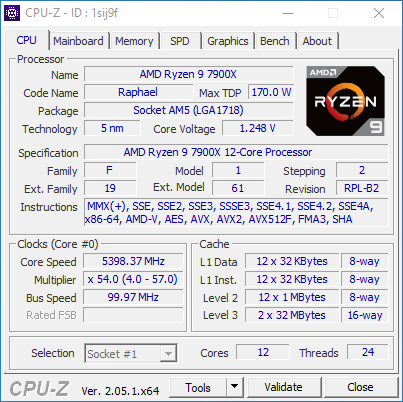
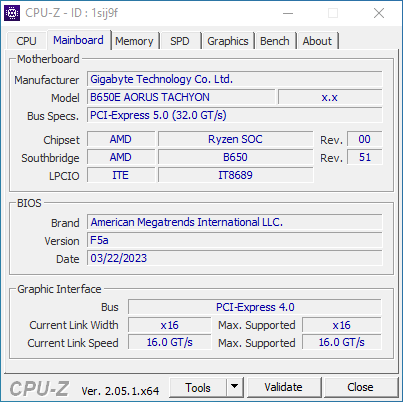
Exactly like used to do in the past each mainboard to arrive in the lab will get mounted on an open-air test bench and will be used for no less than two full weeks (daily tasks and gaming) with a fresh Windows 10 Pro installation. All motherboards arriving here will be tested with the top CPU of that line available to me at the time of each review (I9-9900K for Z390/I9-10900K for Z490/I9-11900K for Z590/I9-12900K for the Z690/Ryzen 9 5900X for X570 and B550/7900X for X670E and B650E/13900K for Z790) together with 16GB (2x8GB) DDR4 4GHz RAM for the Z390/Z490 motherboards, 32GB (2x16GB) DDR4 4GHz RAM for the Z590 and X570S/B550, 32GB (2x16GB) DDR5 6GHz for X670E and 32GB (2x16GB) DDR5 6.4GHz RAM for Z690/Z790 motherboards. Now I don’t know if I will need to change this anytime soon but for now the Intel I9-9900K, I9-10900K and I9-11900K CPUs in each review will be set at 5000MHZ (CPU ratio set to 50 - of course voltages may vary slightly from motherboard to motherboard - RING/Cache frequency at 4700MHZ), the Intel I9-12900K CPU at 5.2GHz (3.7GHz for the E-Cores - RING ratio set to 43), the AMD Ryzen 9 5900X CPU at 4500MHz and the AMD Ryzen 9 7900X CPU at 5.4GHz.
I did think about pushing each motherboard to the max to see which is the better overclocker but 5.2/5/4.5/5.4GHZ 24/7 is more than plenty today, not only in terms of performance but also temperatures (not to mention there are colleagues of mine who have been focusing on maximum overclock potential so that’s also out there). Instead i decided that it'd be far more interesting (not to mention accurate) to see which motherboard is the fastest when using the same exact hardware components/configuration (CPU/RAM/COOLER) with the same exact overclocking frequencies */**. To figure that out I’ll be using several benchmarking programs*** (6 repeats after which the average numbers will get recorded in the charts) like AIDA64, CINEBENCH R20, CPUZ, Passmark Performance Test, RealBench and the Sisoftware Sandra Titanium 2020 version. Needless to say, that between different system configurations these charts also do a great job pointing out the difference in CPU performance.
* Charts will contain other system configurations as well in order to better showcase the performance of each reviewed system.
** Surpassing 4.7GHz with the Ryzen 9 5900X on all cores proved impossible so I chose 4.5GHz as the most balanced choice for all my tests (besides, the latest Intel CPUs in the charts could also climb higher than 5GHz on all cores).
*** To showcase performance differences between E-Cores enabled and disabled on the Intel Core I9-12900K (RING 43 for when enabled and RING 49 for when not) I’ll also be using the latest versions of Horizon Dawn Complete edition, F1 2022 and Forza Horizon 5 (1080p resolution at ultra-high/max settings – average numbers recorded from 3 repeats for each).
TEST RESULTS - AIDA64 / CINEBENCH R20


TEST RESULTS - CPUZ / PASSMARK PERFORMANCE TEST


TEST RESULTS - REALBENCH / SISOFTWARE SANDRA TITANIUM 2020



CONCLUSION
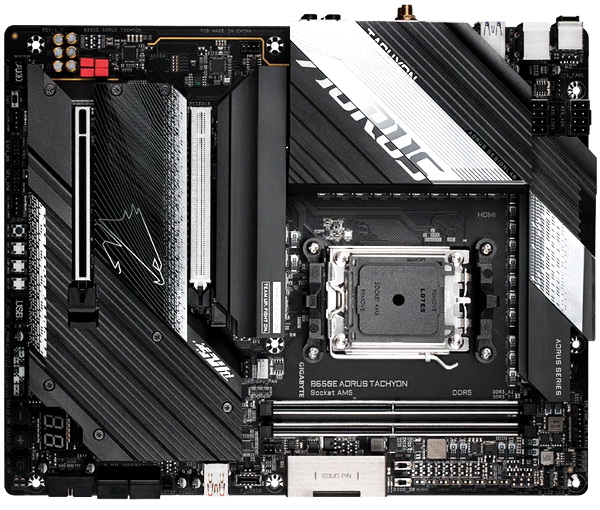
There are 3 key differences between the X670E and B650E chipsets, total PCIe lanes (44 for the X670E and 36 for the B650E), supported number of native SATA ports (8 for the X670E and 4 for the B650E) and supported number of USB 10/20Gbps ports (twelve 10Gbps and two 20Gbps for the X670E and six 10Gbps and one 20Gbps for the B650E). Still even though the X670E does seem as a more solid choice as you can see from today’s charts the B650E AORUS TACHYON has nothing to be jealous of the X670E Taichi, at least not in terms of performance. Quite the opposite really since thanks to various "tweaks" the team over at GIGABYTE has done (including using just 2 DIMM slots) the B650E AORUS TACHYON squeezes considerably more bandwidth from the same exact RAM kit. On the other hand, in terms of CPU performance both motherboards exchange blows and that too is a very good result considering the different tiers these two models belong to. Overall quality is also very good, minus the lack of a rear backplate which is regrettable for such a motherboard model. The BIOS, well, not much more i can say, i think my screenshots easily reveal that GIGABYTE went the extra mile in order to fill it with settings for even the most demanding overclockers out there. Of course, not all is perfect and so it actually took me almost 2 hours playing around with all the BIOS settings in order to stabilize all cores at 5.4GHz (by stabilize i mean passing all of the tests listed in this review and a stress test), something which only took me like 20 minutes on the X670E Taichi. Now i don't really know the why, perhaps it's my sample or perhaps a bug with the 2 latest BIOS versions which I used during my tests? Whatever the reason however i was expecting things to be much easier, especially from a model aimed towards the overclocking community.
Even though the B650E AORUS TACHYON was officially released almost 4 months ago it’s not available anywhere, at least not in the USA and the EU (not in the places I usually search for products anyways). I was able to spot it in Japan for a price tag of just over USD650/600Euros but I seriously doubt this is what we’d see it going for in the USA and the EU (if it ever makes it in either place that is). Availability aside there’s no doubt the B650E AORUS TACHYON is a very capable AM5 motherboard not just due to its overclocking potential but also build quality and features and for all of these it clearly deserves the Golden Award.

PROS
- Very Good Build Quality
- CPU & RAM Performance
- Reinforced & EMI Shielded PCIe slots (1x5.0 x16 / 1x4.0 x4)
- 2 x M.2 PCIe 5.0 Slots / 1 x M.2 PCIe 4.0 Slot
- Overclocking Potential (16+4 Phase Digital VRM)
- Support For Up To 6666MHz+ RAM
- HDMI v2.1 Output
- USB 3.2 Gen2x2 Port
- 2.5GbE Ethernet Port & WiFi 6E Wireless Connectivity
- Available Buttons, Switches & BIOS Settings
- Bundle
CONS
- Availability
- Price (?)
- Only 2 PCIe Slots

 O-Sense
O-Sense





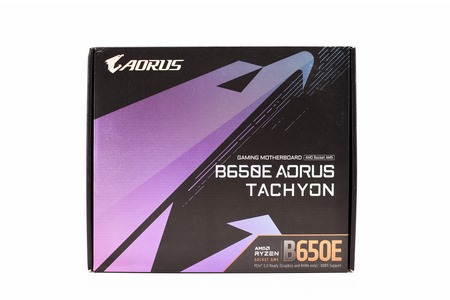







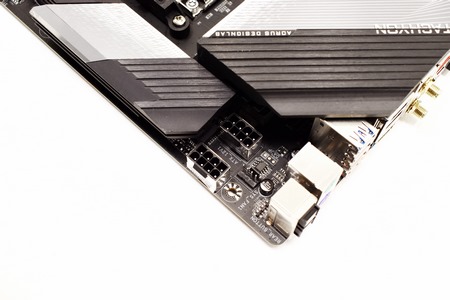


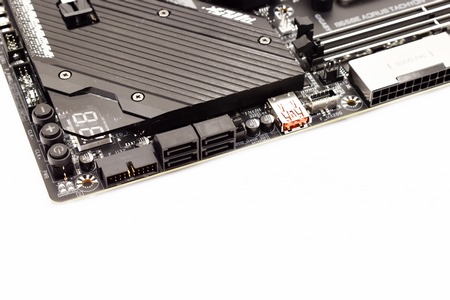












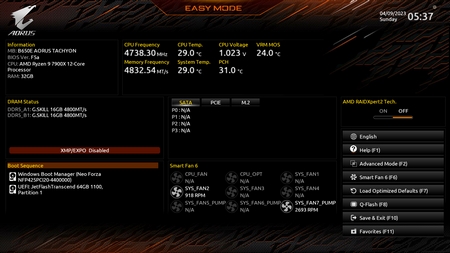




















.png)

